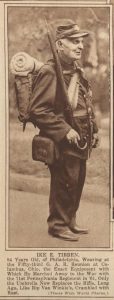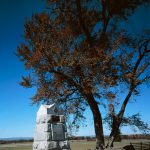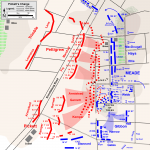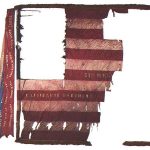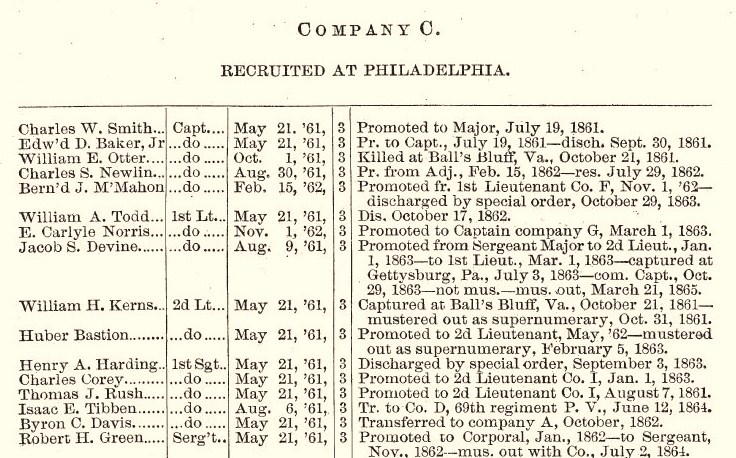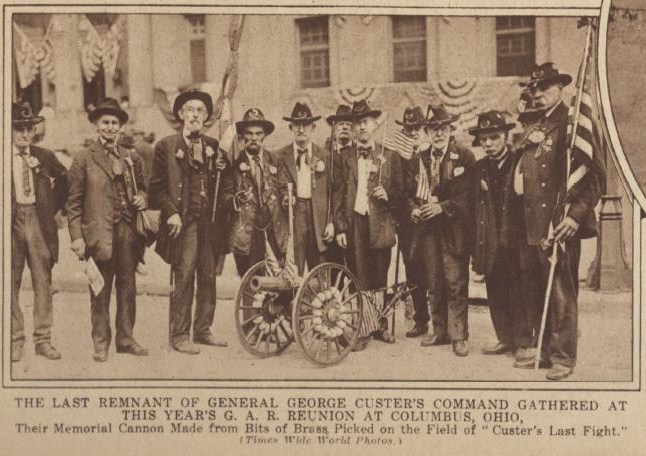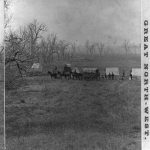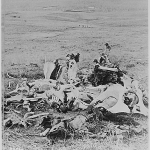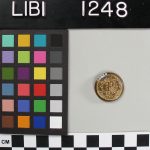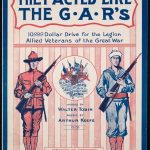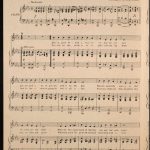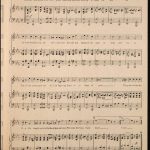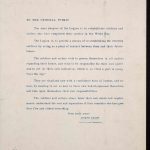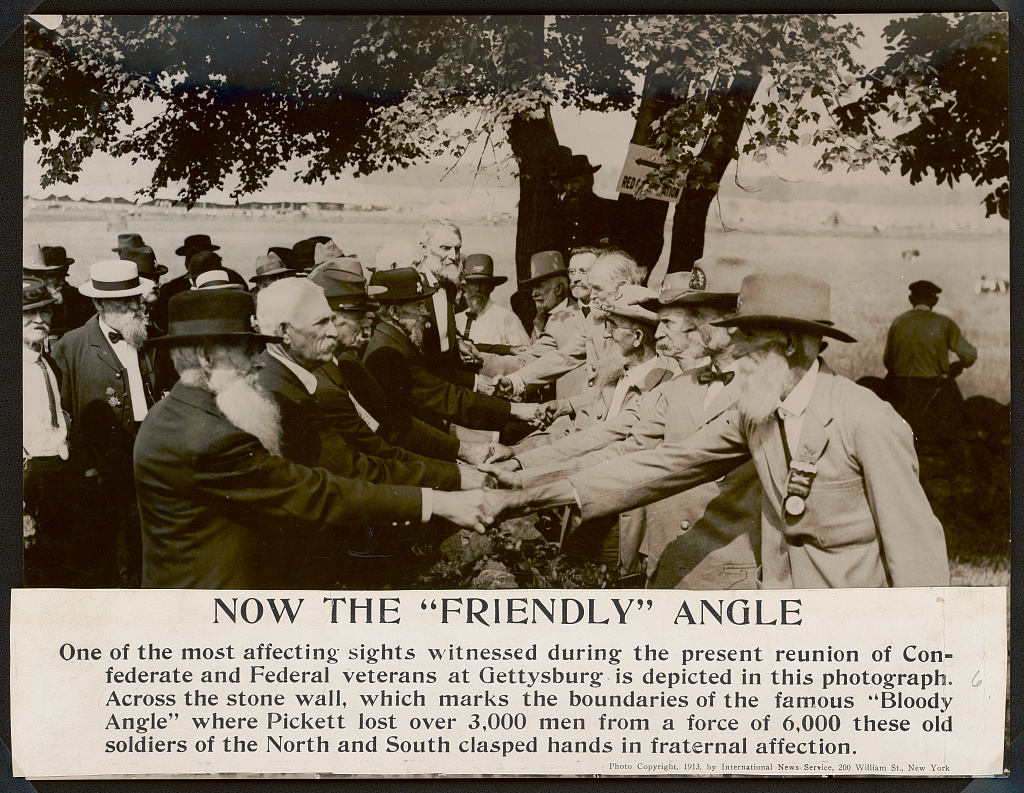After the Civil War the Grand Army of the Republic (GAR) was founded in 1866 as a fraternal organization for Union veterans. According to a web page at the University of Mississippi the Fifty-third National (GAR) Encampment took place September 7-13, 1919 in Columbus, Ohio. In its September 21, 1919 issue The New York Times provided a couple photographs of the reunion.
According to The Civil War in the East the 71st Pennsylvania Volunteer Infantry Regiment had a rather unique history because it was first known at the “California Regiment” and it’s nickname was the “First California Regiment.” When the Civil War started Edward D. Baker, A U.S. senator from Oregon, raised an infantry regiment in the Philadelphia area that counted toward California’s quota for recruits. By the time of the Battle of Ball’s Bluff in October 1861 the regiment had become part of Baker’s Brigade, but at that battle Baker was killed. After that the men were counted as part of Pennsylvania’s quota and the brigade seems to have been referred to as either the California Brigade or the Philadelphia Brigade. From the Peninsula through Cold Harbor the brigade was part of the Army of the Potomac’s Second Corps and was involved in most of the major battles.
Over a third of the 71st was lost at Antietam, and another third was lost at Fredericksburg “occupying a position all day in the open close to Confederate entrenchments.” The regiment helped repulse Confederate attacks on Cemetery Ridge on Day 2 at Gettysburg in July 1863; on Day 3 it was ordered forward to meet Pickett’s charge, but it retreated because of the Confederates’ overwhelming numbers. According to the 71st’s monument, “it fell back into line with the right, thus bringing the whole regiment into action.” After Cold Harbor in June 1864 the remaining men were transferred to the 69th Pennsylvania. On July 2 1864 it “Mustered out under Colonel R. P. Smith. Of the 2,200 men who had served with the regiment, only 153 men returned to Philadelphia to muster out.”
In his article at The American Battlefield Trust, Daniel Landsman writes that the California Brigade did indeed successfully help defend Cemetery Ridge on July 2, 1863 at Gettysburg. And then
On July 3rd, the California Brigade was charged with defending the same position at the Angle during Pickett’s Charge. The Confederate effort against the Angle was greater than any other part of the line. Described as “an advance of an acre of men”, the charging Confederates proved to be too great a force for the 71st Pennsylvania, formerly the 1st California, as they retreated upon seeing the great Rebel approach.
Despite the 71st Pennsylvania’s retreat, the 69th and 72nd Pennsylvania, formerly 2nd and 3rd California, held their position and proved to be instrumental in the defense of the Angle. …
The brigade as a whole didn’t do so well at Cold Harbor. Its new commander, Joshua Owen, and his men were sleeping on the morning of June 3, 1864 while the rest of the Second Division was already in line. The division commander, Brig. Gen. John Gibbon, woke the brigade and then pushed it to the front of line, but General Owen continued to make mistakes and the brigade failed to support Col. Thomas A. Smyth’s attack. The California Brigade was broken up after Cold Harbor. The three year term was up for most of 71st survivors.
________________
It looks like Ike was there for it all, the good, the bad, and the agonizing. According to the 71st’s roster at the Civil War Index Isaac E. Tibben served as a First Sergeant. Apparently to finish up his three years he transferred to the 69th Pennsylvania on June 12, 1864.
The regimental history included with the roster explains that the term of service for most of the 71st expired while it’s line was close to the Confederate position at Cold Harbor. Following orders, the regiment retreated from its position under cover of darkness and eventually mustered out.
That same history doesn’t deny that part of the 71st retreated on July 3rd at Gettysburg, but states that many of the men kept fighting and enfiladed the Confederate advance.
___________________
The other picture in the Times shows a group of veterans remembering and memorializing a battle out west about eleven years after the Civil War ended.

